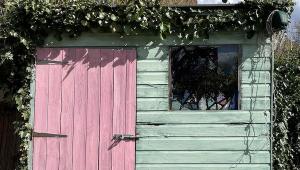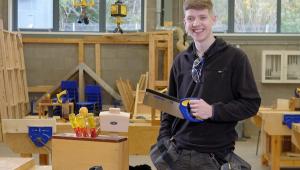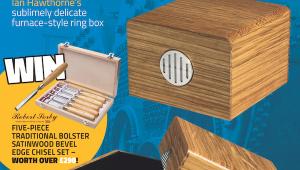A Treasured Wooden Object

Some of the most distinctive qualities of wood are its characterfulness and warmth. Unlike its more industrial counterparts, wood is a material to which people are drawn, and to which they can become attached. To celebrate this, the Wood Awards asked past winners, as well as architects and designers who use wood in their everyday practice, to share their favourite wooden object – a personal totem, knick-knack, objet d’art or tool to which they feel a particular connection.
Established in 1971, the Wood Awards is the UK’s premier competition for excellence in wood design. Winners of the Wood Awards 2020 were announced on 25 November. This year’s winning projects included a London-based apartment complex, a restored mediaeval barn, the largest timber roof in Europe, and products designed for directors at The Royal Opera House and the Science Museum.
Simone Brewster – A Carved Ebony Bust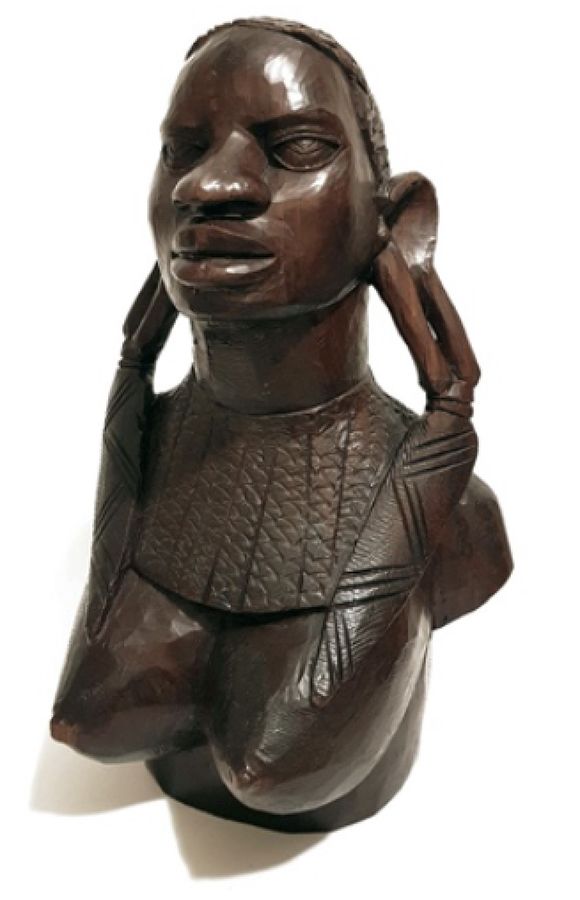
Wood has always meant home. Growing up in north London, my Caribbean parents built a home that sought to capture something of the lands they had left behind, through the collection of objects acquired during their younger years. This amounted to an ensemble of dark wooden carvings from the Caribbean and US, from little-known sculptors who
sought to celebrate the Black Power movements of the 1960s and 70s.
Large carved masks, small drumming figures, and cooking utensils – all these beautiful pieces carved from wood. Of all these objects, the one that has stayed with me the most is a female bust. Proud and strong, her features are hewn from one piece of ebony. On her bare chest lies a bold necklace, and in her ears hang the weight of large earrings. The
texture of her hair is captured in the cross-carved lines on her head. The natural tone of the wood sits in perfect harmony with her features, acting as the smooth skin to her proud character. Dark wood will always be relevant to me. Not only is it home, it’s the material that sparked my curiosity and pride in my culture.
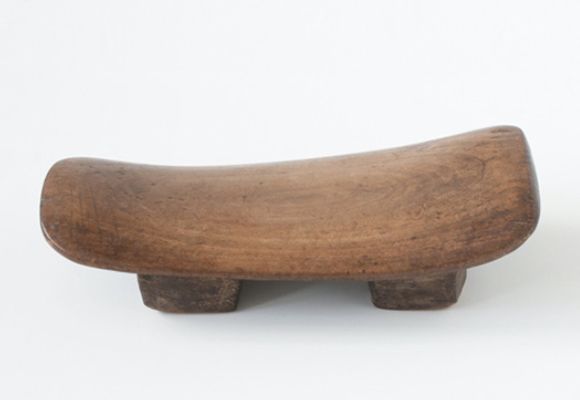
I have been collecting utilitarian handmade objects for much of my life. The more rudimentary an object is, the more it appeals to me. I have a particular interest in bowls, stone hand tools and carved wooden artefacts.
This Ethiopian stool is one of my favourite pieces. The sculptural saddle-like seat has a clean, asymmetric geometry that has been worked with great precision into complex, compound curves. After years of use, the surface of the dense hardwood is well-worn and soft to the touch. In contrast, the feet have been cut roughly in both shape and finish, probably with an adze, powerfully illustrating the hierarchy of those parts of the stool that make contact with the body and those that touch the ground.
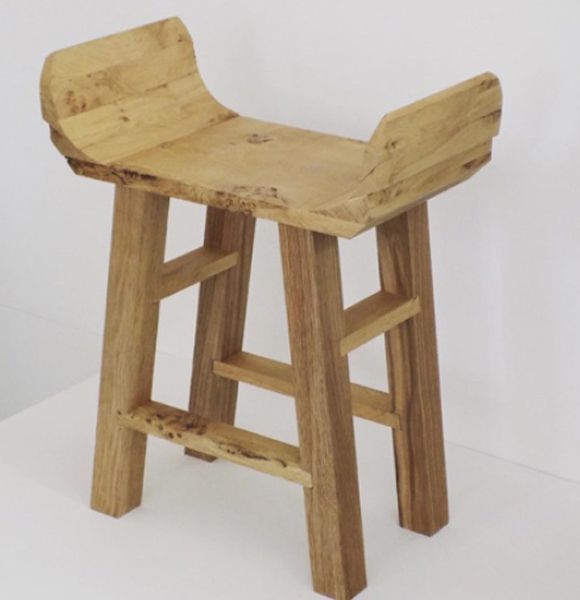
The Ashanti stool is emblematic of Ghanaian culture. Known for its intricate design and curved seat, it’s a cultural artefact.
Being of Ghanaian descent, but born and raised in London, I always felt disconnected from my origins. As a result, l decided to make a stool inspired by the Ashanti stool for my degree show at Camberwell College of the Arts, where I studied 3D design.
The stool represents me and my heritage, with the traditional characteristics of the Ashanti stool ever-present. I decided to use British Pippy Oak based on the fact that it’s a wood found in Britain, but also because of its beautifully intrinsic
clusters of small knots and durable nature.
The stool has a constant presence in my studio, where it acts as a reminder of my dual nationality. It is a form of inspiration.
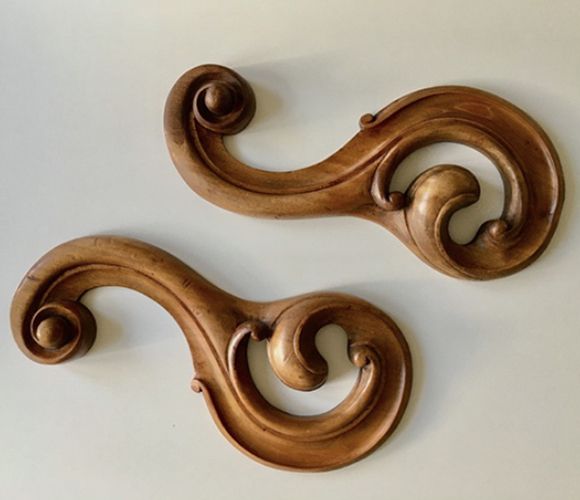
These carved maple wood scrolls, each about 30cm long, hang as a pair on a wall in my living room. They formed part of my mother’s collection of 18th- and 19th-century “Canadiana”, which is the unassuming name for the art of Canada’s early settlers.
My mother loved the graceful lines of these scrolls and the way they very faintly echo the work of Grinling Gibbons, one of her all-time artistic heroes. They seem to be baroquely modest, or modestly baroque, which is quite an achievement.
The scrolls are also a memento of a trip we made in 1985, while I was still a student, to visit England’s historic chapels, National Trust houses, gardens and ruins. It was also a pilgrimage to places where we could see Gibbons’ thrilling work. Although the carving could be considered crude, these scrolls’ lyrical forms and slight asymmetries hold treasured memories. They convey a kind of joy in making that no other decorative object in my house can match.
The most beautiful wooden object I have is not an object: it is a Mahogany tree fruit with its seeds still inside. It looks and feels like wood, and is warm to touch.
In our home-studio we collect objects from nature: seeds, shells, twigs and leaves. In terms of the things we use, we like things that we have made ourselves, or super functional objects that serve the daily rituals of washing, cooking, eating, sleeping.
This fruit was given to me by an elderly couple in Tainan, Taiwan, who run a place called the Qianqi Seed Museum. They collect seeds that have fallen from trees and lovingly sort them, sharing their love of their field with visitors. To enter their place is to enter a wonderland. I love it because it is not an object – it is part of nature, a story about time. When you look at how it is structured on the inside, you can see the most fantastical design of dense seed formations, packaged in protective layers in five perfect sections. The fruit is designed to float on seawater, before landing when conditions are suitable and releasing its seeds.
I am interested in materials. Who likes steel and concrete? Engineers and architects. Who likes wood? People.
One of the things that makes wood more interesting than other building materials is that it communicates its history and character. The tree species, age, climate and place in which it grew, its particular size, shape, colour and strength – all of this is evident in every plank.
A benefit of 'engineered' timber is that cheaper softwoods can, when laminated, match or outperform hardwoods. My special wood object is the first sample I received of cross-laminated sustainable hardwood, an invention revealing new potential for strength and beauty in timber architecture. This treasured Tulipwood CLT sample was made by the American Hardwood Export Council and tested by ARUP on dRMM’s Endless Stair project in 2013. This success led to our Maggie’s Oldham cancer centre, the first laminated hardwood building in the world and a prototype for healthy architecture of the future.
I was teaching at London Metropolitan University when it moved from its Whitechapel home and the architecture school auctioned off some of the creative workshop furniture and woodworking equipment. Impulsively, I bid for two sets of wooden drawers. These now support a sheet of ply, comprising my desk at home.
The chests are not exquisite works of carpentry. But they are utilitarian pieces of furniture with drawers of varying depths and a door concealing adjustable shelves, pre-empting the size and organisation of stored contents. In contrast to the worn warmth of the wood, simple steel D-handles and tag holders enable simple access and a taxonomy of beholden curiosities.
I might have sanded and revarnished them, though to do so would erase the years of activity they have endured and facilitated. I am intrigued by their patina of craft, scarred through creative endeavour, discernible as I work. As I discover scratches, paint droplets and other marks, I recall the instrument-making course which sadly closed as the University moved.
For more information on the Wood Awards, click here.
- Log in or register to post comments


